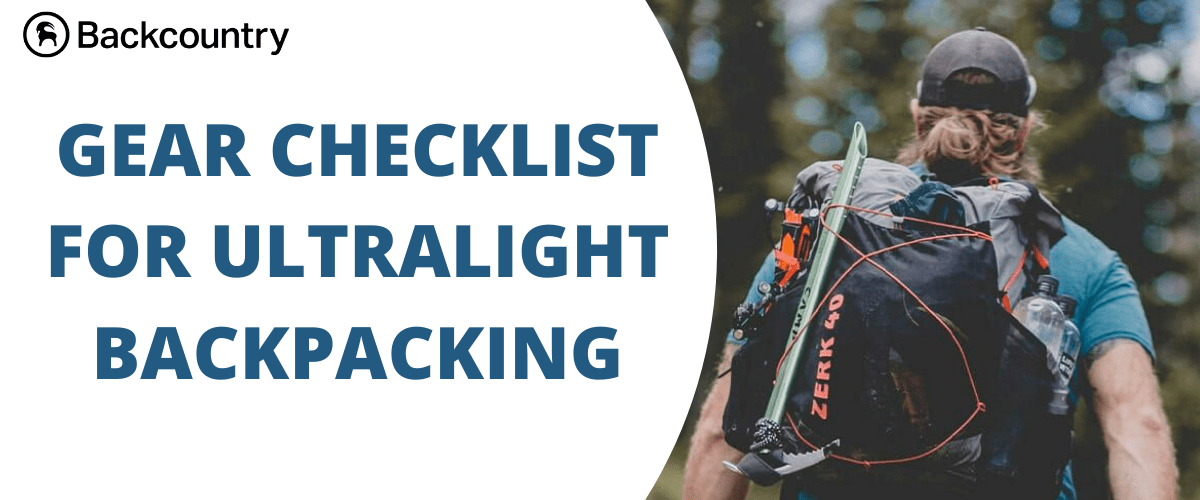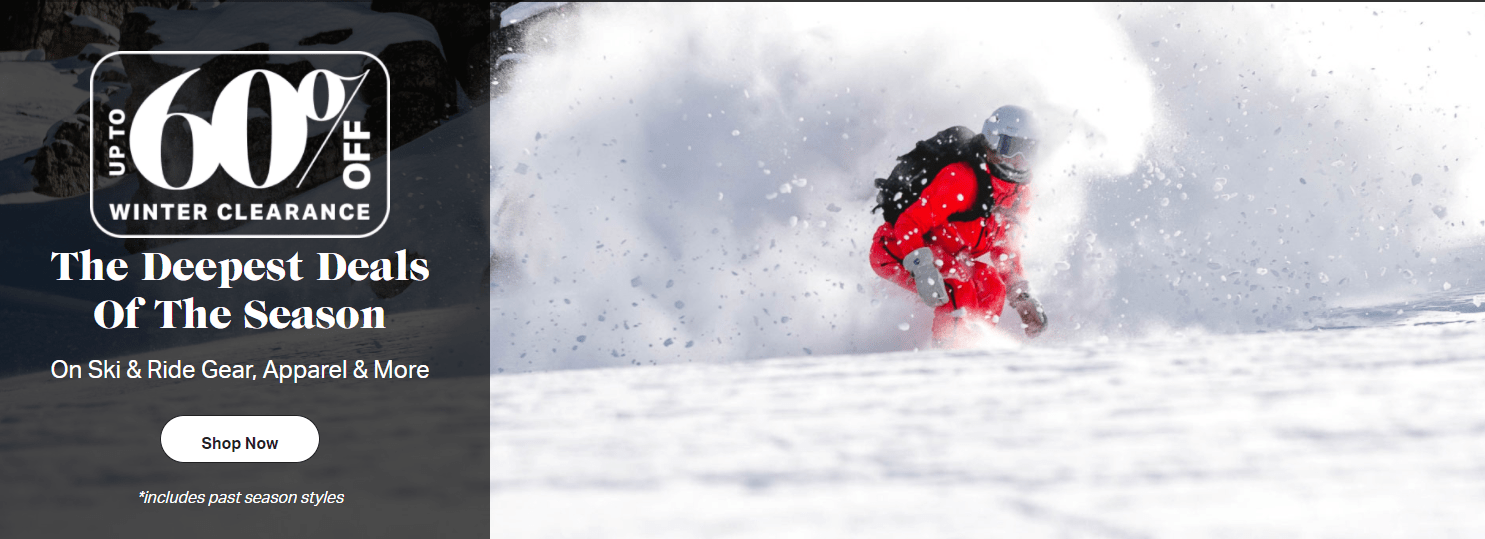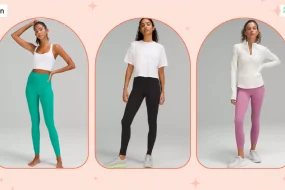
The Ultralight Backpacking Gear Checklist
- Lightweight pack with a hip belt
- Raincover for your pack
- Sleeping shelter (tent, bivy, tarp, etc)
- Ground cover (tent footprint, Tyvek Wrap, etc)
- Sleeping pad
- Sleeping bag
- Waterproof compression sack for your sleeping bag (waterproof strongly recommended for down bags)
- Stove
- Cook pot
- Lightweight spork
- Lighter with waterproof matches or small magnesium and flint block backup
- Food and meals
- Odor-proof food storage (requirements differ based on where you are backpacking)
- Odor-proof trash storage
- Water-proof hang sack for your food
- Paracord for hanging, repairing, or other useful needs
- Water bottle/water bladder
- Water filtration method
- Small pocket knife
- Tent/sleep system repair kit (Nylon tape, duct tape, needle, thread, gorilla glue)
- First aid kit
- Prescription medications
- Toothbrush
- Toothpaste (dry out dabs of traditional toothpaste to save weight)
- Hairbrush and hair ties (optional)
- Feminine hygiene products (as-needed. cup is the lightest)
- Toilet kit (lightweight shovel, TP, hand sanitizer)
- Headlamp
- Extra batteries
- Clothing as needed (one shirt or bottoms will last around 5 days)
- Essential layers (compressible puffy jacket, long sleeved top baselayer, baselayer bottoms, fleece layer, gloves, beanie, pants). These items are weather dependent, but always pack at least one set of clothing for cooler-than-anticipated weather.
- Rain gear (lightweight, breathable rain jacket, rain/wind pants)
- Sun protection (sunscreen, sunhat, SPF lip balm, sunglasses)
- Extra socks for camp
- Trekking poles
- GPS device or phone with GPS map
- Map and compass backup
- Ultralight camping pillow (optional, a stuff sack filled with clothing works too)
- Camera (optional)
- Wireless charging bank (optional, recommended for longer journeys)
- Pee funnel with pee cloth (optional for the women)
Start a Checklist of Ultra-Light Backpack Equipment
The first thing to consider is your backpacking adventure. Is it really right to go light? The Winter Mountain Backpack isn’t really a good fit for an ultra-light backpack, as you’ll need additional equipment to keep you warm. However, desert travel on your favorite long-distance route is a great place to take the task at hand.
Once you know where you’re going and what to expect, it’s important to make a list of the things you really need. Think about needs, not wants. Sure, having a chair with a backpack is nice—it’s probably good for your posture—but it’s not a necessity. Here are ten essentials you’ll always need, no matter where your adventure takes you. Pricking yourself with food, plenty of water and inappropriate clothing can cost you dearly. Instead, choose to weigh in across categories of equipment such as your sleep system, cooking utensils and packages.
Choosing an Ultra-Light Backpack Without Sacrificing Comfort
Backpacks range in weight anywhere from 1 pound to over 5 pounds. As a general rule, the heavier the backpack, the more comfortable it is. If you’re willing to sacrifice comfort, you can easily switch to an ultra-light backpack that feels as light as air.
Many people experience shoulder, knee and hip pain when walking with a backpack. This is often the result of heavy loads and an incorrectly mounted package. Which brings us to the number one package selection rule: choose what fits! A suitable package will more comfortably support the weight. Even an ultra-light load can wear on your body as miles build up, so your backpack needs to fit.
However, an ultra-light package configuration can be comfortable! Instead of reducing the weight of the frame and support structure, look for a package that has fewer bells and whistles. Items like multi-access zippers, extra storage compartments, and other useful features add a lot of weight to your backpack.
Keep your system smooth by properly preparing for a support package that minimizes additional features. You can handle single access to the main compartment and maybe a quick-storage hip belt pocket. Use what you have by removing the brain (top) of the backpack to save some weight without sacrificing comfort.
True Ultra-Light Sleep System
One of the most important players in the weight of the pack is the sleep system. Fluff will always weigh less than synthetic insulation. Although it costs more, switching to a down sleeping bag like the Parsec™ can reduce the weight of your sleeping bag at or below the 2 pound mark.
A lightweight alternative, and yet still warm and functional, is a backcountry blanket like the Vesper™. Switching to a pilot-based sleep system can be daunting. But at a weight of 1 lb 3 oz (regular size) evenings radically reduce the weight and size of your sleep system. It’s hard to argue when the target is ultra-light.
Sleeping pads are also a quick and easy way to lose weight. Tried and true, the indestructible Z-Lite Sol™ weighs only 10 oz and still delivers plenty of heat with an R-value of 2.0. For added cushion and warmth, choose an air-filled sleeping pad, such as the NeoAir® XLite™, which uses ThermaCapture™ reflective technology to achieve an R-value of 4.2 without weight or volume. While XLite is a well-known buffer in the ultra-light community, one-ounce shaving cleaners opt for UberLite™. As the name suggests, the lightest air cushion on the market is just 8.8 oz (regular size).
Improving both the sleeping bag and the backpack can take the weight off your pack faster, pushing it into the ultra-lightweight territory.
Tent or Tarpaulin?
Aside from food and water, the tent is probably the heaviest item in the bag. Switching to an ultra-light tent can be expensive, especially if you usually carry a backpack with a partner. For backpacking in nice weather and desert adventures, consider using a tarpaulin, a feather, or just a floor covering. These budget-friendly, ultra-lightweight backpack equipment checklists weigh almost nothing.
You can simply use the existing tent footprint (make sure you lay it down so it doesn’t explode) or purchase a simple tarpaulin system. Before you practice in a park or in your yard
Throw the tarpaulin in the forest. Setup is simple but requires some effort. You will usually use a tent pole or two to support everything. If the weather is clear and warm, just cover some ground and get some jade.
Ultralight cooking
An easy way to lose a few extra ounces is to use an ultra-light stove. Not only do you save a little weight, but compared to a standard backpack stove, the ultra-light varieties take up significantly less space. Less space means a smaller package, which is ultimately handy.
Unlike their heavier counterparts, using an ultra-light stove requires some skill. Always cook on a flat surface, away from fire hazards (and outside of tents or tarpaulins). Again, don’t be afraid to practice at home to make sure you’re on your own. know how to keep the Kitchen stable.
Water filtration
If you use a heavy pump filter or other heavy water purification method, consider switching to something smaller. An individual filling and squeezing filter reduces a lot of weight without sacrificing performance. These filters are usually very economical, don’t take up much space, weigh almost nothing and are inexpensive. It’s an affordable way to shed a little extra weight in your backpack equipment system.
Clothing and more
The fabric does a lot to keep you comfortable when you keep it in your backpack. Shortening up with the right pair of essential layers, such as a hat, hat, gloves, puffy jacket, and hiking socks, often results in the wrong kind of misfortune. Always pack essentials and a coveted pair of fresh camp socks after a long day on the trail. Natural materials like merino wool and down are lighter than their synthetic counterparts, but keep in mind that they cost more.
You should not leave without a first aid kit and any prescription medicine. However, you can lose weight on essential personal things with a few easy tricks:
- Dehydrate your toothpaste into small pieces or opt for chewable toothpaste tablets.
- Use the same pair of underwear twice, wearing it upside down – you’ll be dirty anyway.
- Carry only extra shirts, pants and shorts for extra long trips (think more than 5 days).











